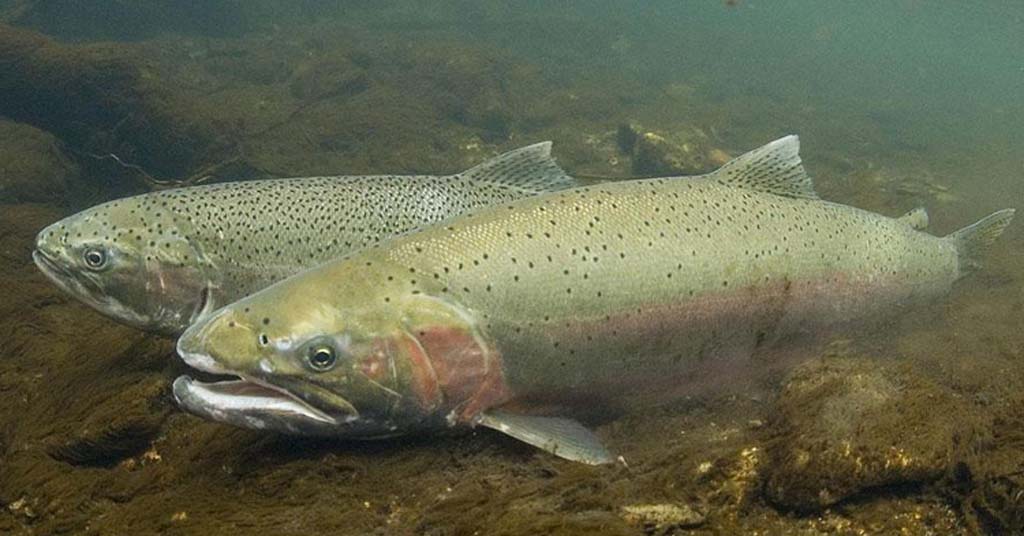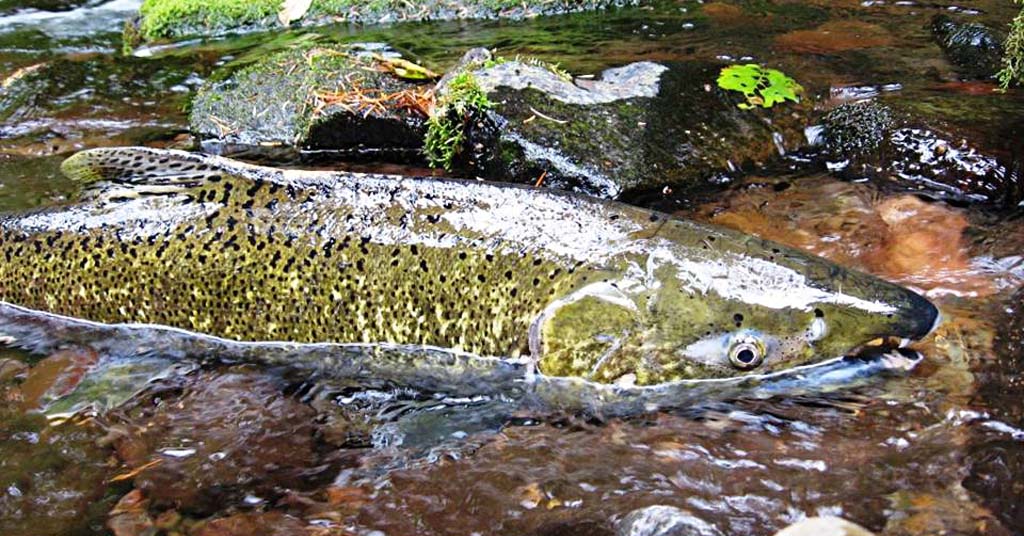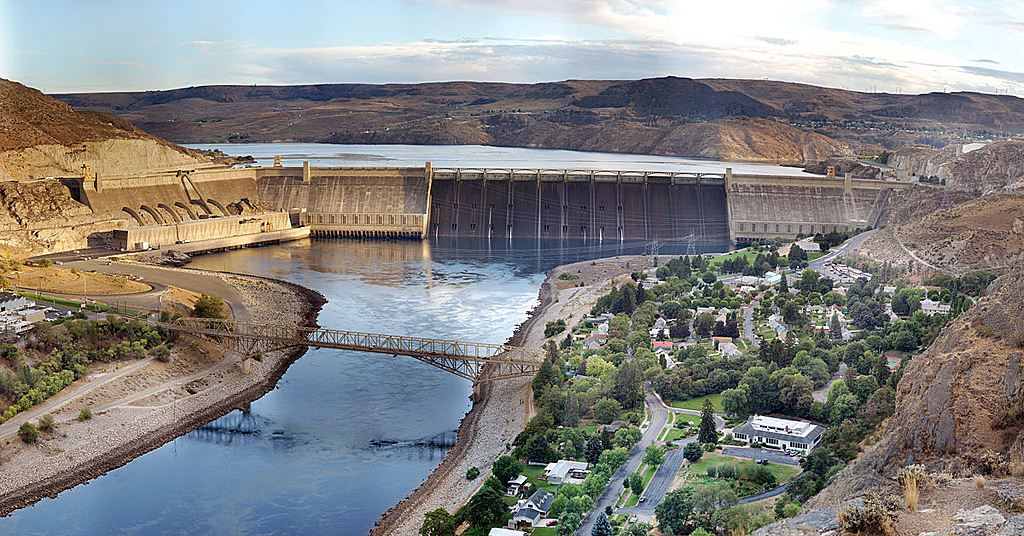The federal agency says simply interrupting dam operations so fish can pass would negatively impact hydroelectric customers
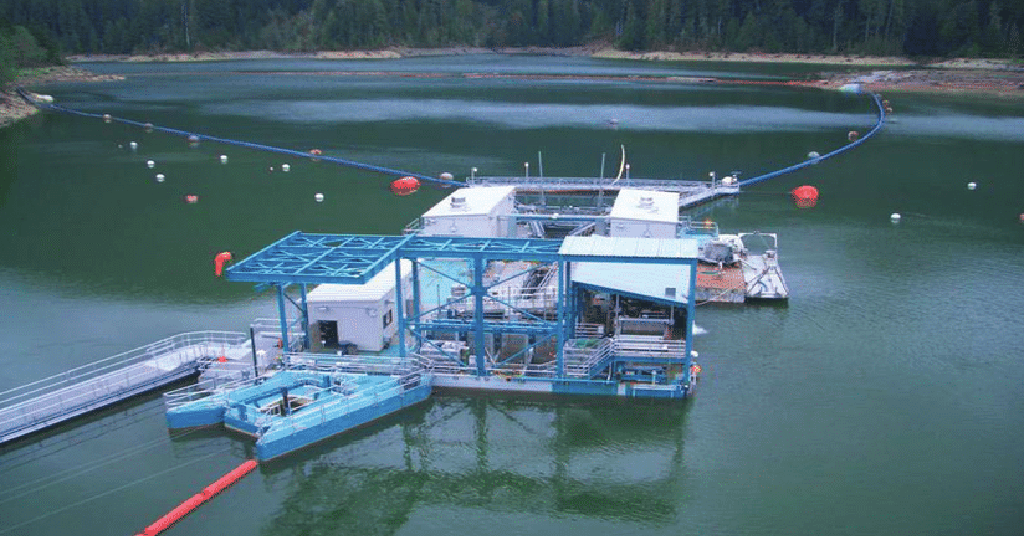
Suck it up: This floating surface collector is used to capture out-migrating juvenile sockeye salmon on Washington’s Baker Reservoir. Photo: Puget Sound Energy
By Kendra Chamberlain. November 21, 2023. The U.S. Army Corps of Engineers’ new plan to help fish move through two dams on the Willamette River using so-called “fish vacuums” is raising eyebrows following an October report on the plan published by ProPublica and Oregon Public Broadcasting.
The USACE wants to build “a floating vacuum the size of a football field with enough pumps to suck up a small river,” according to the report.
Young salmon caught by the vacuums—called “floating surface collectors”—would be moved into massive storage tanks then trucked around dams and dumped downstream. The estimated cost for the fish collectors is up to $450 million each.
Nothing of the size of the installations proposed by the USACE has ever been attempted.
The new fish collectors would be located at Detroit and Lookout Dams on the Willamette River.
Floating surface collectors can be found at dams across the Pacific Northwest.
The massive installations float upstream of a dam, and divert fish into a series of gates, “raceways,” holding cells, fish hoppers and transport tanks that fish are pushed through before being transported downstream either by truck or pipeline.
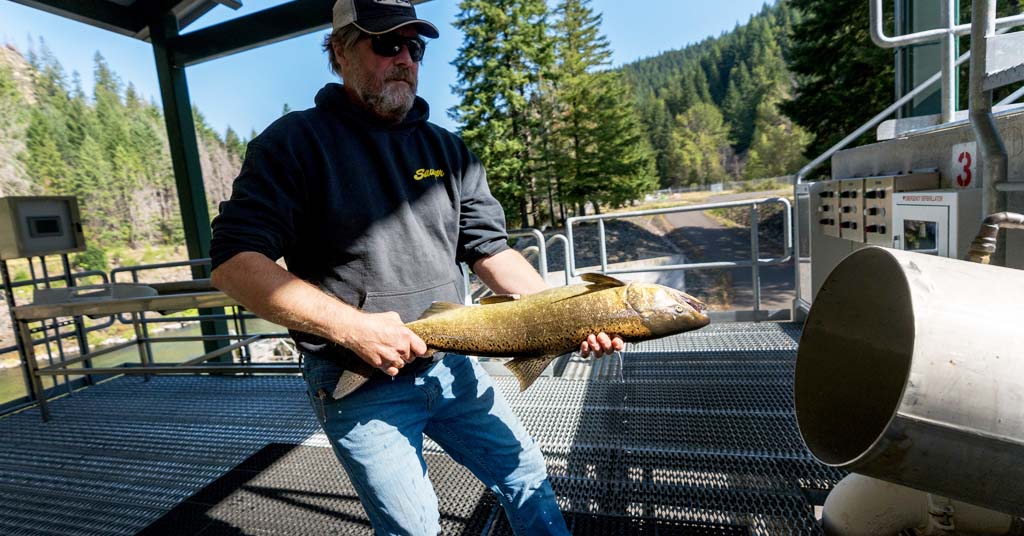
Salmon chuter: Army Corps biologist Doug Garletts loads an anesthetized chinook salmon in a chute. It’ll slide into a holding tank before being drained into a tanker and trucked to the other side of Cougar Dam. Photo: Kristyna Wentz-Graff/Oregon Public Broadcasting/ProPublica
The USACE proposal is unprecedented in scope, but floating surface collectors can be successful in increasing juvenile fish passage.
In 2015, Portland General Electric installed the 147-foot-by-65-foot North Fork Floating Surface Collector at its Clackamas Hydroelectric Dam, along with a seven-mile-long pipe to transport fish over the dam and downstream. The results in fish passage were immediate and impressive: researchers saw a threefold increase in chinook juveniles, a fourfold increase in coho juveniles and new records for steelhead and lamprey migrating downstream of the facility.
PacifiCorp launched its own $60 million collector at Swift Reservoir in 2012 along the Lewis River in Washington. The out-migrating fish there are trucked 30 miles downstream and released below Merwin Dam.
More floating surface collectors are located at the Rocky Reach Dam on the Columbia River and the Round Butte Dam on the Deschutes in Oregon; and the Baker Dam in Washington.
However, the USACE’s current proposal has drawn criticism.
“Some leading scientists have said the project won’t save as many salmon as the agency claims,” according to the ProPublica/OPB report, which also cited a 2017 scientific review that concluded such projects to artificially assist salmon migration will “only prolong their decline to extinction.”
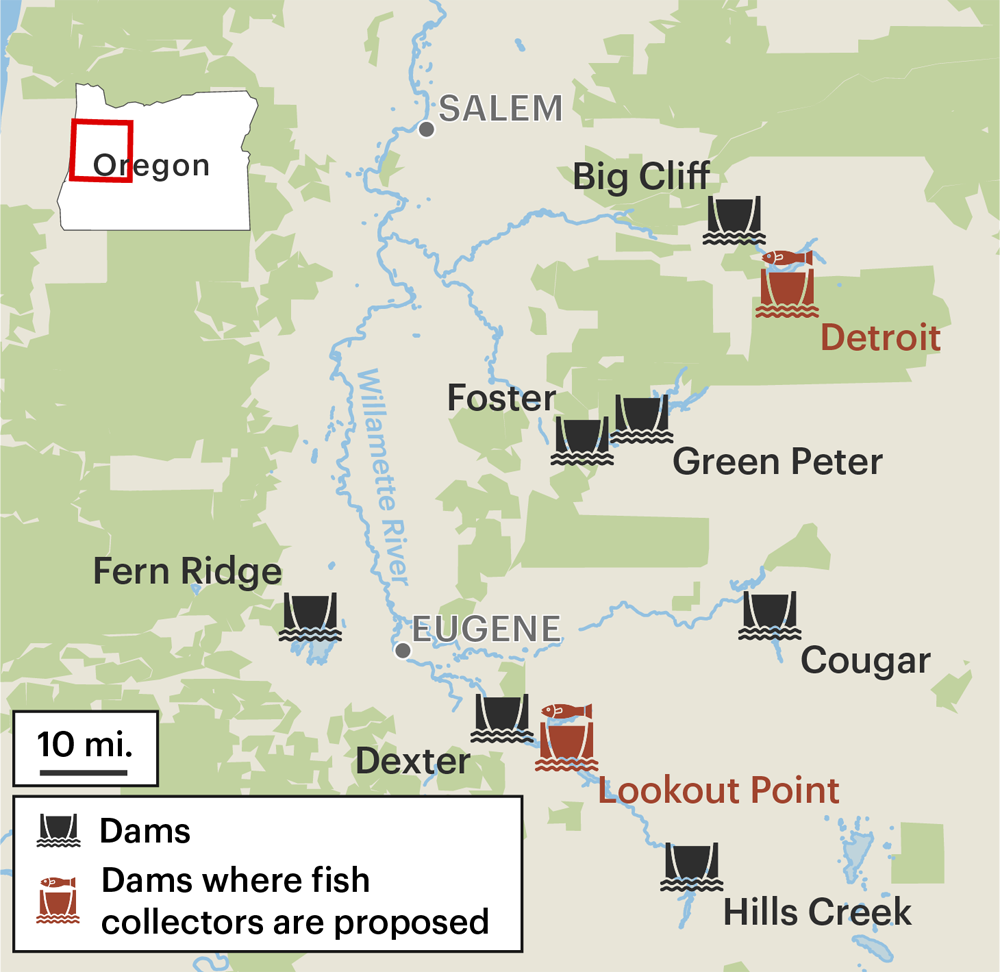
Map: Lucas Waldron/ProPublica
The success of fish collectors is determined by a range of conditions.
Research conducted by the U.S. Geologic Survey found that the efficacy of the systems varies from year to year, and across species, and is influenced by factors such as water temperature, river and dam conditions and collector design.
The collectors proposed by the U.S. Army Corps of Engineers would be the largest ever built, according to ProPublica’s report, and there’s no certainty that the proposed installations would be as effective as the Corps hopes in these particular areas of the Willamette River.
“Each drainage and river system and dam—or set of dams—is unique and needs to be considered on its own merits,” Joseph Bogaard, executive director of the Washington-based nonprofit Save Our Salmon, told Columbia Insight. “There are some places where fish collectors or trap-and-haul systems are a good option, or, at least in the near term, the only or best option.
“This is just a highly expensive project where it seems there are more effective, more certain alternatives that the Corps should be prioritizing and pursuing and working with local communities.”




